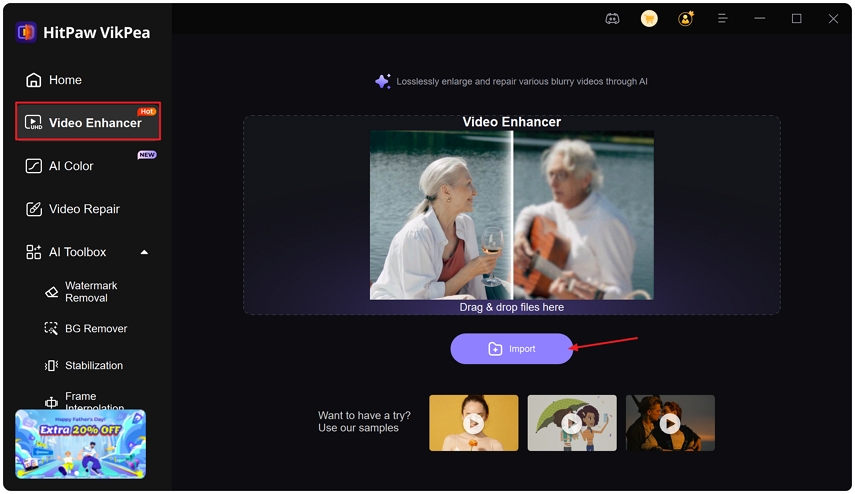Best AI Glasses for Different Uses: Find the Right Smart Eyewear for You
AI glasses are changing how we capture, interact, and compute on the go. From lightweight AI smart glasses that act as voice assistants to high performance headsets for gaming and virtual screens, glass AI devices now cover many uses. This article explains what are AI glasses, what do AI glasses do, and how to pick the best AI glasses for your needs while noting typical AI glasses price considerations.
Part 1. What are smart AI glasses?
Smart AI glasses are wearable devices that combine optics, sensors, microphones, cameras, and on board or cloud AI to provide contextual information, voice assistance, AR overlays, or media capture. They range from subtle frames that act like earbuds with added intelligence to full virtual screen headsets that replace a PC monitor. These devices make hands free computing possible and extend smartphone capabilities while offering distinct feature sets depending on use case and design.
Part 2. Best AI Glasses for Different Use
Different use cases need different hardware and feature trade offs. Whether you need casual everyday assistance, immersive gaming, a portable virtual screen, or productivity tools for work, the best AI glasses for each role vary by battery life, audio, camera, display, latency, and price. Below are top picks and why each stands out.
1. Meta Ray-Bans: Best Smart Glasses Overall
Meta Ray-Bans combine fashionable frames with solid audio, camera, and evolving AI features that suit many users. They feel familiar as regular sunglasses but add smart capabilities such as voice assistant support, on device media capture, and progressive firmware updates that expand functionality. For people who want something subtle that still captures moments and offers assistive features, Ray-Bans remain a top mainstream choice.
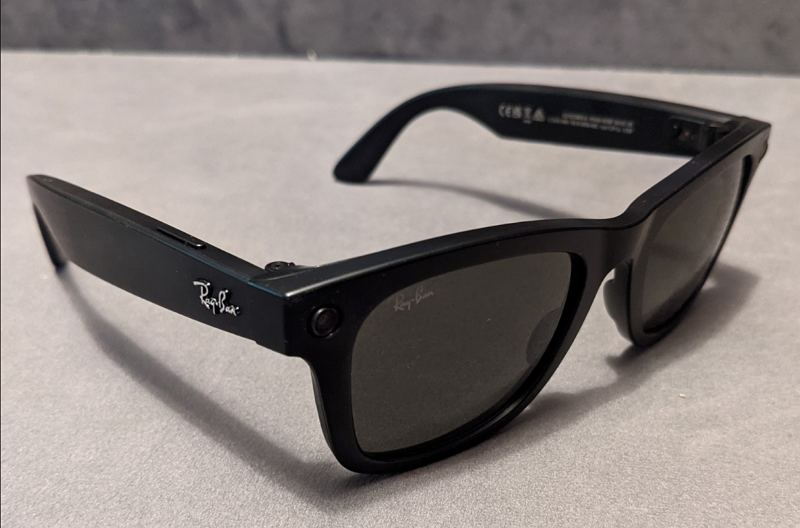
Pros
- Great audio and microphone quality
- Truly look like regular glasses
- Good photos, videos have solid stabilization
- Meta AI has useful assistive features that keep evolving
- Comfortable for long casual wear and public outings
Cons
- Won't last a day on a charge
- Needs case to recharge
- Only shoots vertical wide-angle video
- Won't work with other AI platforms
2. Xreal One Pro: Best Virtual Screen Smart Glasses
Xreal One Pro focuses on delivering a large, crisp virtual screen for streaming, productivity, and movie watching. These AI smart glasses are ideal if you want a personal theater or multi window workspace without hauling a monitor. They connect to devices via USB-C and prioritize display quality and portability rather than onboard AI assistants, making them great for remote work, travel, and media consumption.
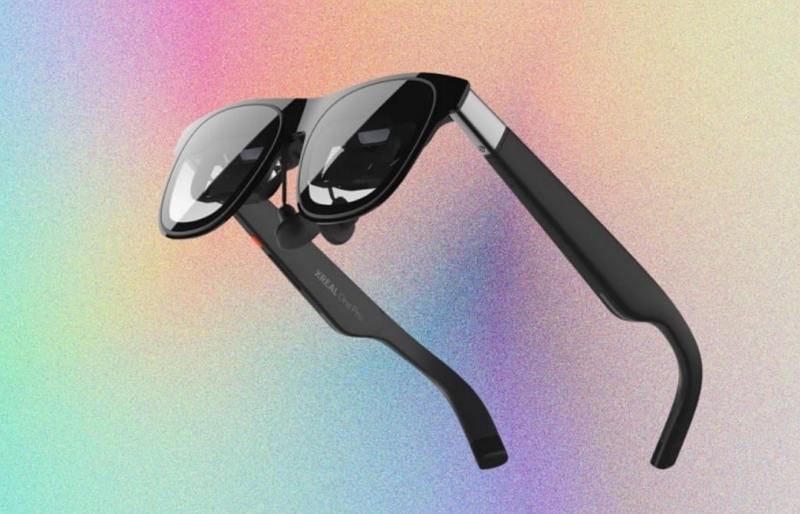
Pros
- Crisp virtual screen with surprisingly wide field of view
- Lightweight design comfortable for long viewing sessions without neck strain
- Easy USB-C connection works with many devices seamlessly
- Excellent color accuracy for movie and productivity use
- Affordable compared to other virtual screen headsets on market
Cons
- Not a standalone device needs tethered connection to run
- Limited battery life when using wireless adapters or accessories
- No built in audio requires separate headphones for sound
- Can feel bulky for users with larger heads or glasses
3. Viture Pro XR Glasses: Best Smart Glasses for Gaming
Viture Pro XR Glasses are built with gamers in mind, offering high refresh rates, low latency, and stereoscopic 3D for an immersive experience. These are the best AI glasses for users who prioritize frame rate and responsiveness over subtle styling. With robust tracking and compatibility with major platforms, they deliver a console like immersion on compatible PCs and consoles when paired with a powerful system.
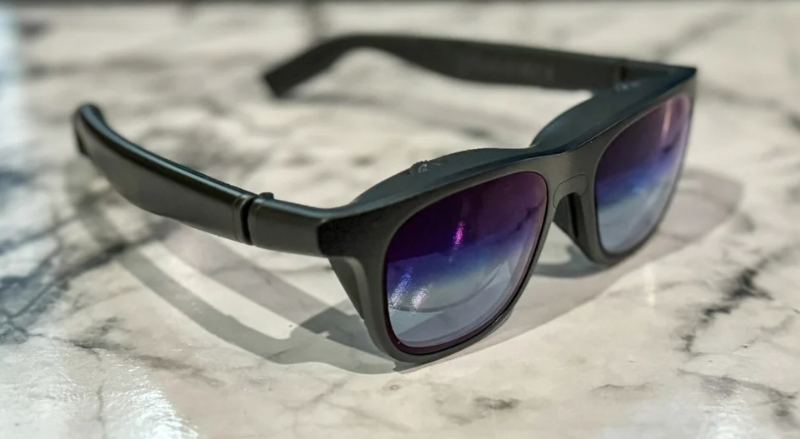
Pros
- High refresh rate ideal for fast paced gaming visuals
- Low latency provides responsive controls and minimal motion blur
- Immersive stereoscopic 3D greatly enhances depth perception in games
- Comfortable padding reduces pressure during extended gaming sessions
- Robust tracking compatible with major gaming platforms and PCs
Cons
- Requires powerful PC to reach peak visual performance
- Heavier than non gaming smart glasses making it noticeable
- Limited battery for wireless play without external power bank
- Pricey compared to casual consumer smart wearable options
4. Sightful Spacetop for Windows: Best Smart Glasses for Work
Sightful Spacetop is optimized for productivity with large virtual multi window support and Windows integration. These smart work glasses create a portable virtual desktop and include enterprise features that help IT teams deploy them for remote work and meetings. If you need to run multiple apps, use Microsoft Office workflows, or replace a second monitor while commuting, Spacetop addresses many professional use cases.
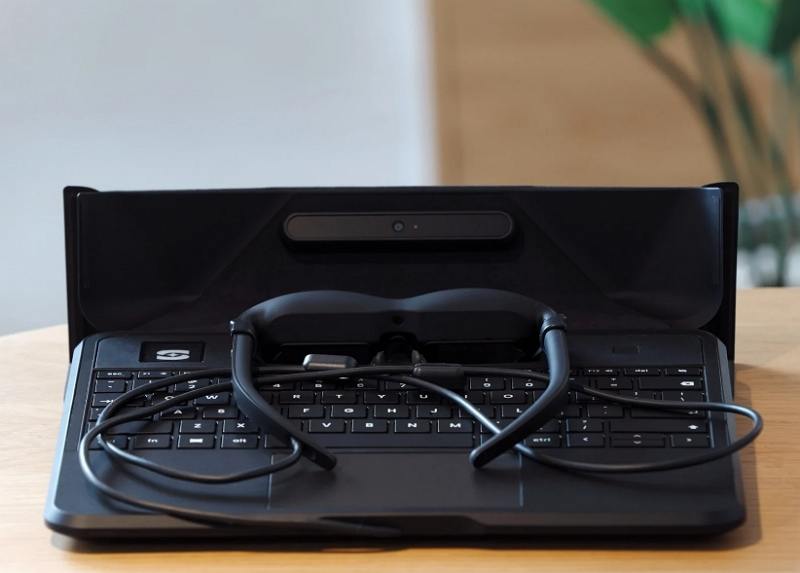
Pros
- Designed for productivity with large virtual multi window support
- Windows optimized features integrate smoothly into Microsoft Office workflows
- Lightweight and comfortable for long work days at desk
- Built in webcam and microphone for virtual meetings convenience
- Secure enterprise features ideal for professional deployments and IT
Cons
- Expensive initial investment for small businesses and freelancers
- Requires Windows PC and compatible drivers for full features
- Bulky carrying case needed for safe transport between offices
- Learning curve for non technical users in setup process
5. Solos AirGo 3: Best ChatGPT-powered AI Glasses for Everyday Use
Solos AirGo 3 blends bone conduction audio with ChatGPT style voice assistance to offer a hands free companion for commuting, fitness, and daily tasks. With long battery life and an emphasis on immediate voice queries, these AI smart glasses excel where quick answers and contextual help matter most. They keep ears open to the environment while delivering concise voice responses and simple on the go features.
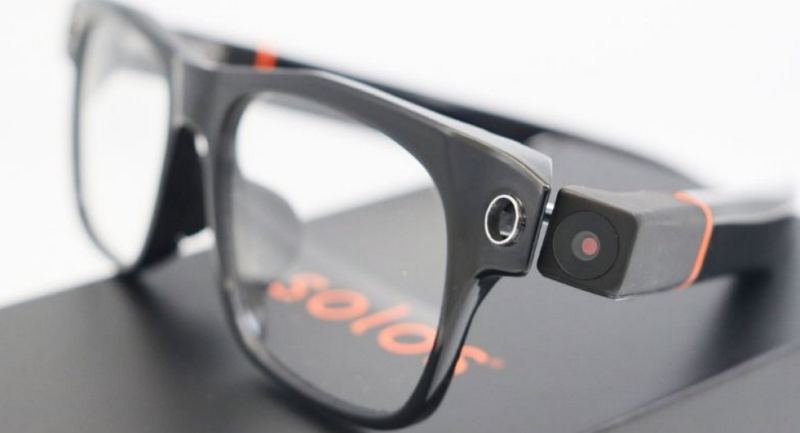
Pros
- ChatGPT integration offers real time voice assistant for daily tasks
- Lightweight sporty design ideal for commuting and everyday wear
- Long battery life supports full day of typical use
- Clear bone conduction audio keeps ears open to surroundings
- Affordable price point compared to other AI smart glasses models
Cons
- Limited camera quality compared to flagship smart wearable competitors
- Some voice commands struggle in noisy public environments sometimes
- App ecosystem smaller than larger brand smart glass platforms
- Not suitable for heavy AR gaming or complex VR applications
Part 3. What Factors to Consider When Choosing AI Glasses?
Choosing the right pair requires balancing features, comfort, compatibility, and budget. Consider the following factors one by one before buying to ensure your new device matches how you plan to use it.
- Display type and visual quality including resolution and field of view
- Audio approach whether bone conduction or in ear drivers are used
- Camera quality for photos and video capture needs
- Battery life for typical daily usage and recharge requirements
- Device weight and comfort for long term wearability
- Compatibility with your phone, PC, or chosen AI platform
- Privacy and security features for enterprise or sensitive use
- App and developer ecosystem for expanding use cases and integrations
- AI features such as on device vs cloud based intelligence and latency
- AI glasses price relative to included features and expected lifespan
Further Reading: Enhance Your AI Glasses Recordings with HitPaw VikPea
If you use AI glasses to record videos, you may encounter low light footage, compression artifacts, or shaky moments that make captured memories less satisfying. Users can use HitPaw VikPea to restore and elevate video quality. VikPea offers multiple AI models and upscaling options that target blur, noise, and low resolution, helping make your footage look professional. This tool is especially helpful when glass AI cameras produce footage that needs sharpening, denoising, stabilization, or color restoration.
- AI-powered noise reduction removes grain and compression artifacts from low quality footage
- Frame interpolation upsamples frame rate for smoother motion and less jitter
- Super resolution upscales video resolution preserving fine textures and edges
- Color correction restores natural tones and fixes exposure inconsistencies across frames
- Stable motion stabilization reduces camera shake for steadier handheld recordings
- AI-based deblurring reconstructs sharp details from motion or focus blur
- Automated scene detection applies tailored enhancement settings per scene or shot
Step 1.Download and Launch HitPaw VikPea on your computer. Import your video by clicking on "Choose file". The drag and drop method also works for importing video to the software menu.

Step 2.This software offers mutiple AI models such as General Model, Sharpen Model, Potrait Model and Video Quality Repair Model. Select a suitable models based on your needs.

Step 3.Under Export Settings, choose your desired resolution. VikPea supports upscaling up to 4K or 8K. Click on "Preview" to see your video. If satisfied, Press the "Export" option to save your video.

Frequently Asked Questions About AI Glasses
The best AI glasses depend on intended use. For everyday social wear choose fashionable, battery friendly models like Meta Ray-Bans. For portable virtual screens pick Xreal One Pro. Gamers should prioritize low latency and high refresh rate headsets like Viture Pro XR. For work and virtual desktops, Sightful Spacetop is a strong choice. Balance comfort, features, and AI glasses price when deciding.
Ray-Ban AI glasses are worth it if you value style combined with solid media capture and evolving Meta AI features. They suit users who want social friendly design and decent audio while accepting modest camera specs and limited battery life. If you need advanced AR functions or long battery life, other specialized models may be better.
AI glasses can capture photos and videos, transcribe speech, provide voice assistance, overlay contextual information, translate languages, and act as a portable virtual screen. Some models run AI locally while others use cloud processing for complex tasks. Use cases range from hands free navigation to on the spot content creation and real time productivity tools.
AI glasses emphasize intelligent features such as voice assistants, automatic content enhancement, and contextual responses using machine learning. AR glasses focus on augmenting the visual field with overlays, markers, and spatial info. Many modern devices blend AI and AR, so terms sometimes overlap, but AI stresses smarts while AR stresses visual augmentation.
Conclusion
AI smart glasses and glass AI devices cover a wide range of needs from subtle everyday assistants to full immersion gaming headsets and portable virtual desktops. When choosing the best AI glasses, consider display quality, audio, camera, battery life, compatibility, and your typical use case. Keep AI glasses price in mind and evaluate whether the device ecosystem and software updates meet long term needs. If you record with smart glasses, remember tools like HitPaw VikPea Video Enhancer can significantly improve recorded video quality, helping you get the most from your wearable camera.
Leave a Comment
Create your review for HitPaw articles




